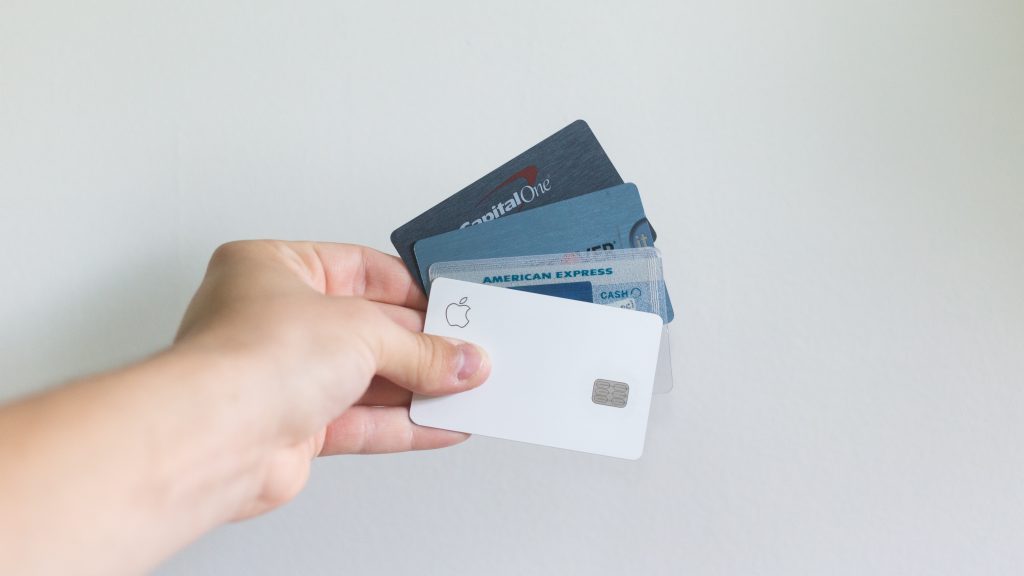Money Management

Credit Card Debt is Killing Me: Strategies for Getting out of Debt
Have you ever thought “Credit card debt is killing me”? Canadians currently struggle with record amounts of indebtedness, with $2,121 of outstanding credit card balances for each Canadian. With the average interest rate of 19.99%, making the smallest payment on this amount would take over 17 years to pay off and cost $3,765 in interest!
If you’re having trouble managing your personal finances, this article will help provide you with some strategies you can use to get out of debt. Although this article deals with consolidation strategies as well as making arrangements with creditors, there are other strategies you can explore here.
Credit Card Debt Consolidation

Consolidating credit card debt involves using a new loan to pay off all your existing balances. This strategy combines everything into one amortized payment, meaning you are making payments toward the existing balance each month. So by creating one amortized loan payment, you will pay off all your existing obligations faster and pay less interest.
There are two main types of consolidation strategies: refinancing your debts into a mortgage and using an unsecured consolidation loan.
Mortgage Refinancing
A mortgage refinance is a new mortgage on an existing property. If you don’t currently own your home, this won’t be an option for you yet. Depending on how much equity is in your home, you may be able to combine all your debts into a new mortgage secured on your home. The benefit of refinancing is that mortgage interest rates are much lower than interest rates on credit cards.
Credit Card Debt Consolidation Loans
Consolidation loans are ‘unsecured loans’ since there is no collateral pledged for the loan. With a mortgage, the lender ‘secures’ the loan against a home. If you default on the loan, the lender can take the home as security to recoup their losses. With unsecured loans, the interest rates are higher and the length of the loan is shorter. This results in a higher monthly payment and more interest paid vs a mortgage refinance.
Yet, when you compare the interest you pay with minimum payments on a credit card, a consolidation loan has a couple of benefits. They can reduce the amount of interest you pay and the length of time it takes to repay your obligations in full.
As mentioned at the beginning of this article, a $2,121 balance on a credit card costs over $3,700 in interest if making minimum payments. With a consolidation loan at 24.99% interest paid over 5 years, the interest cost is only $1,613.50!
Informal Proposals
An informal proposal is an agreement made between a debtor and a creditor. This is an off-the-books proposal that can allow you to settle your debt for less than you owe if you make a one-time payment.
You can negotiate these proposals on your own directly with the creditor. Some lawyers and agencies specialize in informal proposals. They charge a part of the amount of money saved as their fee.
If you settle your debt through an informal proposal, it will impact your credit for a while. The debt is considered to be delinquent and written off by the lender, but your credit should improve after a year or so as it is not registered on your credit report in the same way as a consumer proposal (below).
Consumer Proposals
Consumer proposals are official agreements between a debtor and a creditor. The difference from a consumer proposal is that these agreements must be made with all your creditors at once. You must to have a representative file your consumer proposal and negotiate with the creditors on your behalf.
Unlike informal proposals, you aren’t required to pay off the proposal immediately. You can make payments over a period of time or you can pay them in full if able. The government regulates these agreements you can be eligible to reduce your debt by as much as 30% of your original balances.
This agreement is registered on your credit report and can impact your score for several years after completing the proposal in full. Until you complete paying these agreements in full, you cannot access new loans – such as a mortgage.
Claiming Bankruptcy

Bankruptcy is a long legal process that can absolve you of most of your outstanding debts. The federal government regulates this process and you must have legal representation from an insolvency trustee.
During this process, the trustee negotiates on your behalf to reduce all your debts. One of the biggest drawbacks of this process is that you need to place all your assets under the control of your insolvency trustee. The trustee will sell all assets to pay out as much of your debt as possible. Once the trustee negotiates the remaining balances and pays the debts from the sale of your assets, the bankruptcy is complete.
Bankruptcy has a major impact on your credit. It will stay on your credit report for 7 years for your first, 14 years for your second and any further bankruptcies will remain on your report forever. During the bankruptcy process, you cannot apply for new credit.
Moving Past Credit Card Debt
Whichever strategy you use to help you move past financial issues, once you clear your balances you’ll need to work to stay debt free. All this starts with creating good financial habits. Unfortunately, less than half of all Canadians keep a regular monthly budget. Yet, budgeting is a proven way to track and moderate your monthly spending.
Some other ways to ensure that you don’t fall back on your old habits are:
- Always pay cash – Spending money is easier to do when you only need to tap a card. Rather than relying on debit/credit cards, visit an ATM each week and withdraw the discretionary money you will allow yourself to spend each week. This tactic helps you visualize how much you’re spending to ensure you stay on budget
- Cut up credit cards – Although you may not want to cancel old accounts (hint: that will hurt your credit score), cutting up cards for accounts you’re not using can help you avoid the temptation
- Make food at home – Did you know that your morning Starbucks coffee costs less than $1 to make? If you have a Starbucks or similar morning habit, that could cost you $5 or $6 per day. Assuming that you only drink coffee on workdays and avoid it on weekends and holidays, you’re still spending $1,300 to $1,500 per year on something that you can make at home for less than $300 per year. Translate this habit across all categories of food and drink that tempt you each day and these costs add up
- The Envelope System – This system was designed by finance guru Dave Ramsey. It involves keeping track of regular expense categories by placing the amount of money you assign to each category into an envelope each month. As mentioned above, paying with cash ensures that you can visualize how much you spend on each budget category
If you’re struggling with debt today, the most important thing to remember is that there is a way out. You’ll have to change your mindset about spending and create effective financial habits. But you will get there. Here are some articles to help you manage your personal finances:
- 2 Ways to Get Out of Debt Faster
- 25 Money-Saving Tips
- How to Build a Budget and Save Money
- Managing a Personal Budget: Your Key to Financial Success
- 7 Easy Ways to Save Money
About the Author
The column's goal is to level up your financial knowledge and help you avoid common pitfalls and mistakes along the way. Although money management sometimes seems like an intricate task, it doesn't have to be. The advice here is common sense and simple to follow. The first step to a better financial future starts here, and it's never too late to begin. Adam Stapley is a Mortgage Broker with Pineapple Financial and author of the personal finance Newsfeed CanadianFinanceGuide.ca. He is intensely passionate about helping Canadians build wealth through the power of real estate. Many of the articles in this column come from Adam's experience assisting Canadians to understand and shape their personal finances. Pineapple Financial Lic #12830 CanadianFinanceGuide.ca adam@canadianfinanceguide.ca




